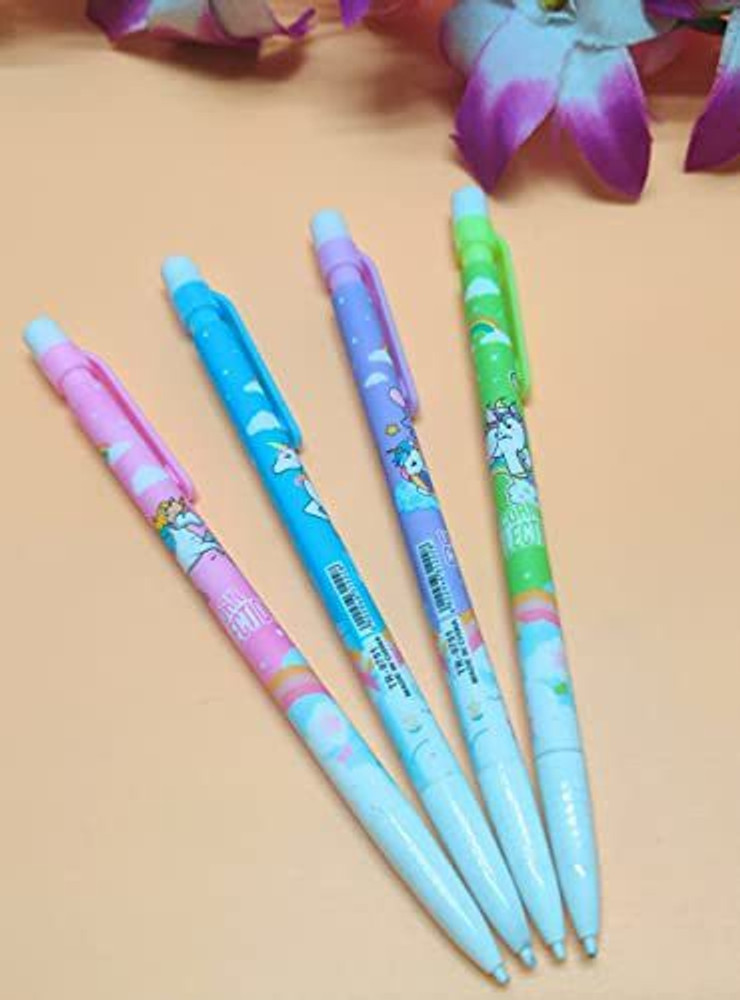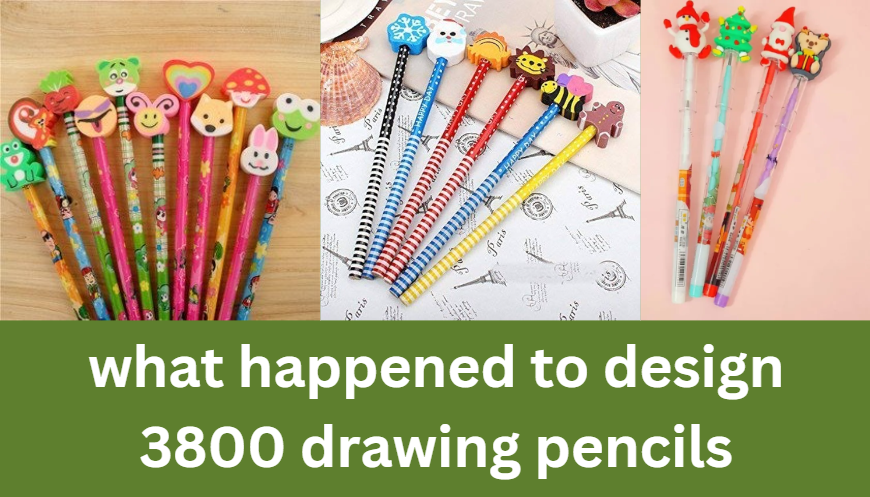Contents
- 1 Introduction
- 2 The Evolution of Design 3800 Drawing Pencils
- 3 What Happened to Design 3800 Drawing Pencils?
- 4 Why Were Design 3800 Pencils So Beloved?
- 5 The Legacy of Design 3800 Drawing Pencils
- 6 FAQs: What Happened to Design 3800 Drawing Pencils?
- 6.1 1. Why were the Design 3800 drawing pencils discontinued?
- 6.2 2. Are Design 3800 pencils still available for purchase?
- 6.3 3. What made the Design 3800 drawing pencils so popular?
- 6.4 4. Are there good alternatives to the Design 3800 pencils?
- 6.5 5. Why is there still interest in Design 3800 pencils today?
- 6.6 6. Is the Prismacolor Turquoise series the same as the Design 3800?
- 6.7 7. Why did digital tools contribute to the decline of traditional drawing pencils like the Design 3800?
- 7 Conclusion: The Legacy of Design 3800 Drawing Pencils
Introduction

The Design 3800 drawing pencils have a rich history and a strong legacy among artists, architects, and designers, especially in the USA. These iconic pencils, often recognizable by their turquoise-colored barrel, have been trusted tools for professional and hobbyist artists alike. However, over time, they seem to have disappeared from art supply stores and stationery shops, leaving fans of these pencils wondering: What happened to Design 3800 drawing pencils?
In this comprehensive article, we will explore the fascinating history of the Design 3800 pencils, track the companies that manufactured them, and analyze the reasons behind their discontinuation. By delving deep into the pencil’s journey, we’ll provide unique insights that go beyond just a historical summary. We will also answer common questions and discuss the broader context of art supplies in modern times.
Brief Overview of the Design 3800 Drawing Pencil
The Design 3800 series was a popular line of high-quality drawing pencils. These pencils were designed for precision and durability, catering to professionals who needed consistent and reliable tools for technical drawing, sketching, shading, and drafting. Known for their smooth lead and variety of grades (from soft to hard), the Design 3800 pencils offered something for everyone in the artistic community.
However, as with many beloved products, the pencils have undergone several changes in ownership and manufacturing over the decades, leading to their eventual disappearance from the market. So, what happened to Design 3800 drawing pencils? Let’s dive into their story.
The Evolution of Design 3800 Drawing Pencils

The Early Days: Eagle Pencil Company
The Design 3800 pencil’s origins date back to the Eagle Pencil Company, a leading manufacturer of writing and drawing instruments in the late 19th and early 20th centuries. Eagle was known for producing high-quality pencils for a wide range of purposes, and their products gained a strong reputation both in the USA and globally.
Eagle’s reputation for quality ensured that its drawing pencils became a staple in the art and drafting communities. The pencils’ smooth graphite and durable lead became essential tools for artists, illustrators, architects, and engineers. The company’s dedication to precision and quality laid the foundation for what would later become the Design 3800 drawing pencil.
Transition to Berol
In 1969, Eagle Pencil Company was rebranded as Berol, after the founder’s family name, Berolzheimer. Under Berol’s management, the company continued to produce high-quality drawing pencils, including the beloved Design 3800 series. Berol was known for its innovative approach to art supplies, frequently updating its product lines to meet the demands of the modern artist.
During this period, the Design 3800 pencils gained significant traction in the USA. Berol made sure to maintain the consistency and high standards set by Eagle. The pencils became the go-to choice for professionals looking for smoothness, precision, and reliability.
Empire Berol and Expansion
As time progressed, Empire Pencil Corporation acquired Berol in the early 1990s, leading to the creation of Empire Berol. Despite changes in ownership, the pencils’ quality remained intact. The turquoise-hued Design 3800 pencils continued to thrive and were widely regarded as some of the best tools for drafting and drawing.
Sanford’s Acquisition: A Turning Point
The real turning point for the Design 3800 drawing pencils came in 1995, when Sanford, a company that would eventually become part of Newell Brands, acquired Empire Berol. Sanford was already a major player in the writing and drawing tool industry, known for its markers, pens, and other office supplies.
Under Sanford’s ownership, the Turquoise Design 3800 pencils continued to be produced, but cracks in their availability began to emerge. By the late 1990s and early 2000s, many longtime users of the pencils noticed that they were becoming harder to find in art stores and online. Though Sanford maintained the Berol name for a while, the Turquoise series of pencils slowly faded from the shelves.
What Happened to Design 3800 Drawing Pencils?

Discontinuation and Decline
So, what happened to Design 3800 drawing pencils during the Sanford era? While the pencils were never officially discontinued with any grand announcement, they began to fade from prominence. There are several factors that may have contributed to the pencils’ eventual disappearance from the market:
- Shift in Focus by Sanford/Newell: After acquiring Berol, Sanford focused on its more lucrative and mainstream products, like Sharpie markers and Paper Mate pens. The professional art supplies market, including the Design 3800 pencils, likely did not fit as well into the company’s growth strategy. This shift in focus may have led to the gradual phasing out of products like the Design 3800 drawing pencils, which catered to a niche audience.
- Competition from Other Brands: By the early 2000s, other pencil manufacturers like Staedtler, Faber-Castell, and Tombow had solidified their positions in the global market. These companies offered similar high-quality pencils with widespread availability, making it difficult for the Design 3800 series to maintain its dominance. The art supply market became more fragmented, and newer brands began to take over shelf space.
- Changes in Manufacturing Practices: As production shifted between companies (Eagle, Berol, Sanford), manufacturing practices likely changed as well. Some users noticed slight differences in the quality of the pencils’ lead or wood over time, possibly due to cost-cutting measures or changes in sourcing materials. This subtle shift in quality may have led loyal customers to seek alternatives, further contributing to the pencils’ decline in popularity.
- Rise of Digital Art: The rise of digital drawing and design tools in the late 1990s and early 2000s also played a role in diminishing demand for traditional drawing pencils. Programs like Adobe Illustrator, Photoshop, and CorelDRAW offered digital alternatives that attracted many artists and designers. As more professionals transitioned to digital platforms, the need for traditional pencils, including the Design 3800, decreased.
The Current Status of Design 3800 Drawing Pencils
Today, the Design 3800 drawing pencils are no longer produced, at least not under the original branding and quality that made them iconic. Some versions of the Turquoise pencils can still be found under the Prismacolor brand (another Newell acquisition), but they are often viewed as a different product than the original Design 3800 pencils made under Berol.
While these pencils may still exist in some form, their quality, manufacturing process, and overall availability are far different from what fans of the original product remember. Collectors and longtime users of the pencils may occasionally find unused packs online or in vintage stores, but they are no longer in mainstream production.
Why Were Design 3800 Pencils So Beloved?
The love for the Design 3800 pencils can be attributed to several key factors:
- Consistency and Quality: Artists and designers loved the Design 3800 pencils for their smooth and consistent lead. Whether one was working on a fine technical drawing or a rough sketch, these pencils delivered precision every time.
- Variety of Grades: The pencils were available in a wide range of grades, from the softest 9B to the hardest 9H. This versatility made them suitable for different artistic techniques, from soft shading to detailed line work.
- Comfortable Design: The turquoise barrel of the pencil was not only visually distinctive but also ergonomic. The pencils were easy to hold, allowing for extended use without discomfort.
- Reliability: The pencils were durable and reliable, with high-quality wood casing that sharpened easily without breaking. Artists knew they could count on the Design 3800 pencils for their most important projects.
The Legacy of Design 3800 Drawing Pencils
While the Design 3800 pencils may no longer be widely available, their legacy lives on. These pencils set the standard for quality drawing tools and inspired many other brands to raise their game. Artists who once relied on the Design 3800 pencils may have transitioned to other brands, but the impact of these iconic pencils is still felt in the art world.
Alternatives to Design 3800 Pencils
For those who miss the Design 3800 pencils, there are several high-quality alternatives available today that offer similar performance:
- Staedtler Mars Lumograph: Staedtler’s Mars Lumograph pencils are a favorite among artists and designers. Known for their smooth graphite and wide range of grades, these pencils are a great alternative to the Design 3800 series.
- Faber-Castell 9000: Faber-Castell’s 9000 series pencils are another excellent choice. With a high-quality lead that resists breaking and produces smooth, consistent lines, these pencils are widely regarded as some of the best on the market.
- Tombow Mono 100: Tombow’s Mono 100 pencils are popular among professional illustrators and architects. They offer a similar experience to the Design 3800 pencils, with a focus on precision and smoothness.
- Prismacolor Turquoise Pencils: As mentioned earlier, Prismacolor offers a line of Turquoise drawing pencils that bear some similarities to the Design 3800 pencils. However, opinions on whether these pencils match the original quality of the Design 3800 series are mixed.
FAQs: What Happened to Design 3800 Drawing Pencils?
1. Why were the Design 3800 drawing pencils discontinued?
The Design 3800 drawing pencils were likely discontinued due to multiple factors. These include the acquisition of Berol by Sanford, a shift in corporate focus toward more mainstream products (like Sharpie markers), rising competition from other premium pencil brands, changes in manufacturing practices, and the increasing popularity of digital art tools, which reduced the demand for traditional drawing supplies.
2. Are Design 3800 pencils still available for purchase?
Original Design 3800 drawing pencils are no longer in active production. However, some leftover inventory or vintage packs can sometimes be found on websites like eBay or in specialty art supply stores. There are also similar products available under the Prismacolor brand (another Sanford product), though they are often considered different from the original Design 3800 pencils in terms of quality and feel.
3. What made the Design 3800 drawing pencils so popular?
The Design 3800 pencils were beloved for their consistent, high-quality lead, smoothness on paper, and variety of graphite grades (from 9B to 9H). Their iconic turquoise barrel, excellent durability, and reliable performance made them a go-to choice for artists, architects, and illustrators who needed precision and quality for detailed work.
4. Are there good alternatives to the Design 3800 pencils?
Yes, there are several alternatives that offer similar quality and performance to the Design 3800 pencils. These include the Staedtler Mars Lumograph, Faber-Castell 9000, Tombow Mono 100, and Prismacolor Turquoise pencils. Each of these brands is trusted by professionals and offers a range of graphite grades suitable for different drawing styles.
5. Why is there still interest in Design 3800 pencils today?
Many artists and designers have fond memories of using Design 3800 pencils, which were a staple in professional art supplies for decades. Their high quality and reliability set a benchmark for drawing tools, and the nostalgia surrounding them continues to fuel interest, especially among those who grew up using them or who have collections of vintage art supplies.
6. Is the Prismacolor Turquoise series the same as the Design 3800?
The Prismacolor Turquoise pencils are considered descendants of the Design 3800 series, but opinions on their quality vary. While they are visually similar and still produced by Sanford’s parent company (Newell), some long-time users report that the lead feel and durability are different from the original Design 3800 pencils. It’s worth trying them out, but they may not fully replicate the experience of using the original pencils.
7. Why did digital tools contribute to the decline of traditional drawing pencils like the Design 3800?
As digital art tools became more sophisticated and accessible, many artists and designers transitioned to using software like Adobe Illustrator and Photoshop for creating artwork. These digital tools allow for precision and versatility that can surpass traditional drawing supplies, leading to reduced demand for products like the Design 3800 pencils.
Conclusion: The Legacy of Design 3800 Drawing Pencils
The journey of the Design 3800 drawing pencils is a reflection of the broader shifts in the art supply industry over the past century. From their origins with the Eagle Pencil Company to their rise in popularity under Berol, and eventual decline under Sanford, the story of these pencils is one of innovation, craftsmanship, and changing market dynamics.
For decades, the Design 3800 pencils set a gold standard for high-quality drawing tools, beloved by artists, architects, and designers alike. Their smooth graphite, iconic turquoise barrel, and wide range of grades made them an essential tool for creative professionals who required precision and consistency in their work.
However, as the art world evolved, so did the tools and technologies used to create it. The rise of digital art, combined with corporate changes and increased competition, ultimately led to the pencils’ decline and discontinuation. While their production may have ceased, the legacy of the Design 3800 pencils continues to inspire a new generation of artists who value traditional tools.
For those seeking alternatives, brands like Staedtler, Faber-Castell, and Tombow offer exceptional pencils that capture much of the quality and spirit of the Design 3800 series. While the original pencils may no longer be readily available, their influence on the world of art supplies remains strong.
In the end, the Design 3800 drawing pencils are not just tools—they are a symbol of artistic craftsmanship and dedication to quality that transcends time. Their memory will always hold a special place in the hearts of those who relied on them to bring their creative visions to life.





















+ There are no comments
Add yours